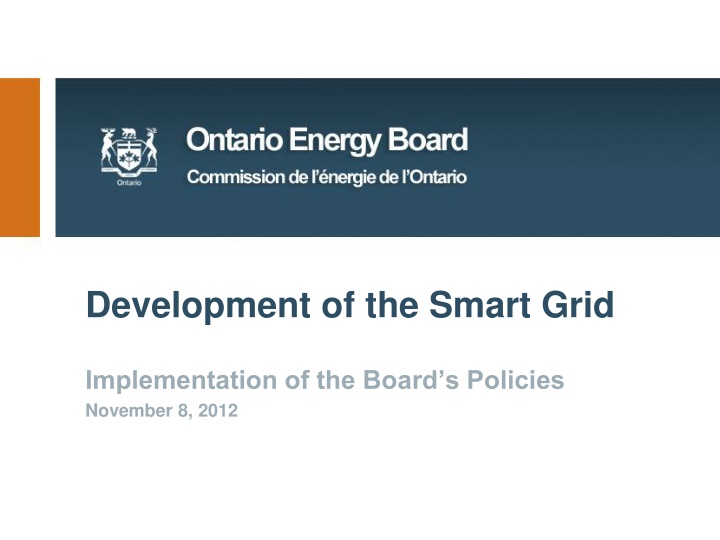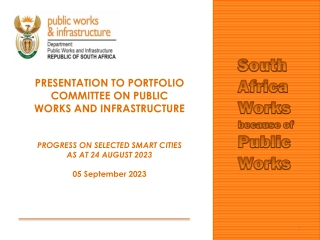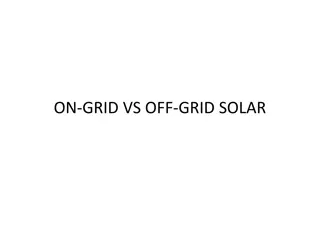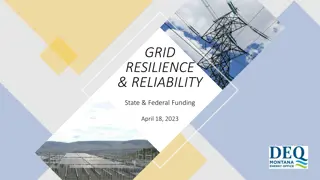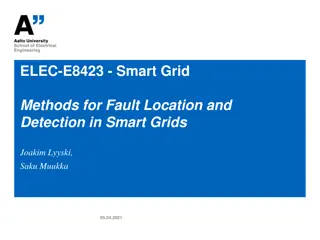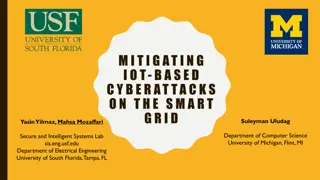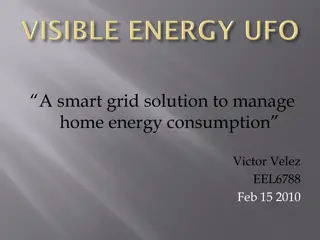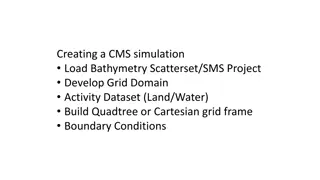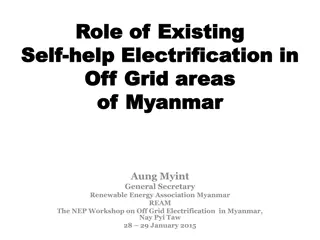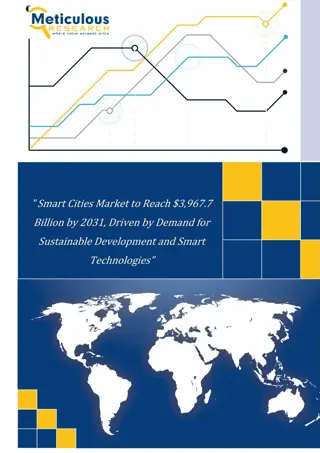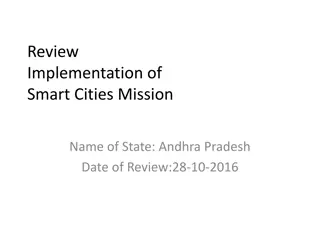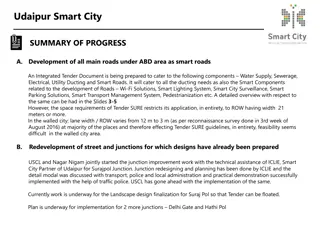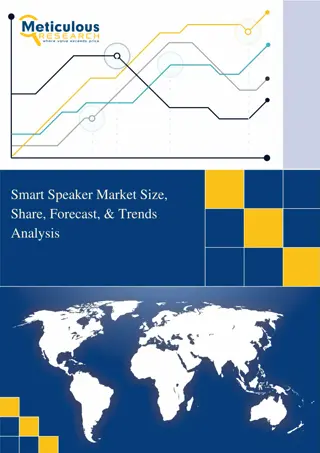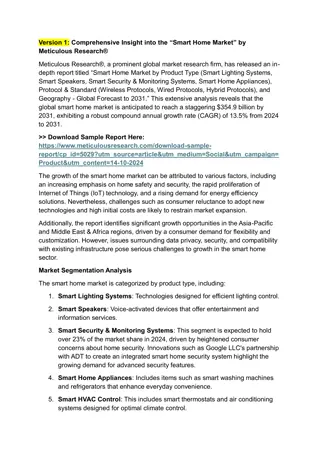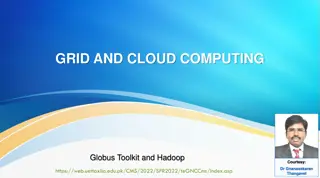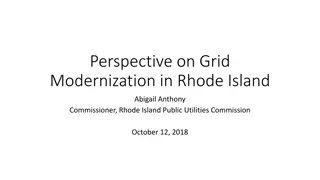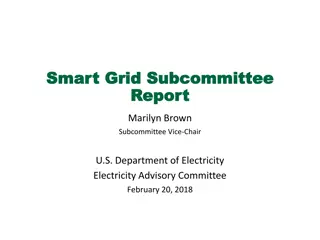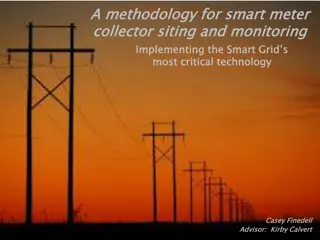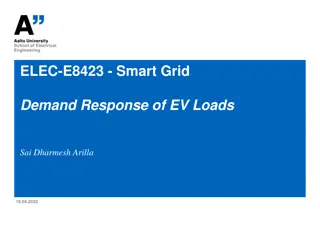Development of the Smart Grid Implementation - Board's Policies
This content pertains to the development and implementation of smart grid technologies in line with policies set by the board. It covers discussions, meetings, and decisions related to smart grid infrastructure, regulatory frameworks, cybersecurity, privacy, and customer access to data. The Smart Grid Working Group plays a key role in advising on these matters.
Download Presentation

Please find below an Image/Link to download the presentation.
The content on the website is provided AS IS for your information and personal use only. It may not be sold, licensed, or shared on other websites without obtaining consent from the author.If you encounter any issues during the download, it is possible that the publisher has removed the file from their server.
You are allowed to download the files provided on this website for personal or commercial use, subject to the condition that they are used lawfully. All files are the property of their respective owners.
The content on the website is provided AS IS for your information and personal use only. It may not be sold, licensed, or shared on other websites without obtaining consent from the author.
E N D
Presentation Transcript
Development of the Smart Grid Implementation of the Board s Policies November 8, 2012
Agenda 9:30 9:40 Welcome Board Staff Presentation: Update on RRFE process, role of SGWG Board Staff 9:40 10:10 Discussion of Smart Grid in light of October 2012, RRFE Report of the Board All 10:10 10:45 BREAK 10:45 11:00 Discussion of Smart Grid in light of October 2012, RRFE Report of the Board (continued) All 11:00 12:15 LUNCH 12:15 1:00 Discussion of Conceptual Framework for Regulatory Documents All 1:00 2:30 BREAK 2:30 2:45 Discussion on cyber-security and privacy All 2:45 3:15 Discussion on facilitation of customer access to meter data All 3:15 4:30 Any other business All 4:30 4:45 2 2
First meeting of the reconvened Smart Grid Working Group Welcome Renewed Regulatory Framework for Electricity (RRFE) Report policies Direction from the Board Background to current remit Staff s proposed approach 3 3
Development of the Smart Grid Board has determined: For rate-setting, no distinction between smart grid and more traditional investments; and Behind-the-meter services are a non-utility activity. All other issues to be addressed in a Supplementary Report Smart Grid Working Group to reconvene to develop appropriate regulatory documents 4 4
Smart Grid Working Group Smart Grid Working Group to be reconvened for meetings in November SGWG previously met six times in the Spring of 2011 9 LDCs (including Hydro One (partially as transmitter)) Mix of sizes and from different organizational levels 2 consumer groups 11 technology vendors (e.g. Bell, IBM, GM, DEML, Telvent, Honeywell, Energate) 4 agencies 5 5
Smart Grid Working Group SGWG will be asked to advise on: Staff proposals on content for regulatory documents e.g.; recognition of benefits Interoperability How best to address cyber-security and privacy; and How best to facilitate consumer access to meter data. 6 6
Development of the Smart Grid - Timelines 2012 Working Group Meetings November 2013 January Supplementary Report of the Board Smart Grid requirements integrated into Filing Requirements developed in Distribution Network Investment Planning process February 7 7
Ontario Statutory and Regulatory Context GEGEA - new objective for the Board to facilitate the implementation of the smart grid in Ontario Minister s November 24, 2010 Directive - established 24 specific policy objectives of smart grid Board required to provide Guidance to licensed electricity distributors and transmitters and other regulated entities whose fees and expenditures are reviewed by the Board Includes Guidance on criteria by which licensee s Smart Grid Plans will be evaluated OEB consultation January 13, 2011 letter Phase 1 Smart Grid Working Group (SGWG) Phase 2 Staff Discussion Paper and comments November 8, 2011 RRFE process culminating in September 16, 2012 Report 8 8
Ministers Directives Objectives Four types of objectives Correspond to statutory definition of smart grid Policy Efficiency, customer value, co-ordination, interoperability, security, privacy, safety, economic development, environmental benefits and reliability Customer Control Access, visibility, control, participation in renewable generation, customer choice and education Power System Flexibility Distributed renewable generation, visibility, control and automation and quality Innovative Infrastructure Flexibility, forward compatibility, encourage innovation and maintain pulse on innovation 9 9
Key Messages from SGWG Board should avoid being overly prescriptive but business case requirements should be clear E.g. demarcation between monopoly recoverable expenses and new customer behind the meter services Specify the what not the how There are varying capabilities among distributors to implement smart grid The smart grid is a foundation for new benefits E.g. connection of renewable distributed generation, demand-response opportunities, electric vehicles, storage These benefits may not accrue to utilities that undertake the expense and/or may be long-term 10 10
Staffs Proposed Approach Need to bridge the high-level principles in Directive to Board s options to respond to requirement to provide Guidance Main distinction: rate regulation (COS/IRM) and conduct regulation (codes, license conditions) Apply threshold (yes/no) or evaluative criteria E.g. security, privacy yes/no; efficiency - evaluative Distilled into eight key questions Well-received by SGWG 11 11
Staff Discussion Paper Eight key issues: 1. How to assess smart grid? 2. What smart grid benefits should the Board recognize? 3. How to enhance customer control 4. What should be the demarcation point between regulated monopoly and behind-the-meter services? 5. How to ensure system flexibility? 6. What is the appropriate level of detail in applications? 7. How best to ensure privacy and cyber-security? 8. What role should the Board play with regard to smart grid standards? 12 12
Staffs proposed approach overview Board has given policy direction on issues 1 and 4 Remaining issues to be addressed in supplementary report In the context of preparing regulatory documents to implement Board policy Supplementary Report is to be a comprehensive response to Minister s Directive Board decided only to address part of the Directive in the RRFE Report Task of SGWG is to assist staff to produce the appropriate regulatory documents Filing Requirements, Code and/or license amendments 13 13
Overview of Process GEA Definition of smart grid New Board object Minister s Directive 24 objectives 140 cell objectives matrix Discussion Paper Eight issues Two issues Other issues RRFE FRs, Codes etc Supp Report 14 14
Staffs proposed approach; focus on regulatory documents Filing Requirements Guidance to distributors and transmitters on what they should file in support of their rate cases Need to be expanded to respect the Minister s Directive Code amendments Become enforceable License amendments Become enforceable 15 15
Staffs proposed approach; parsing the Ministers Directive The 24 objectives apply to all distributor rate base activities The activity-based objectives have applicability naturally limited to the subject activities Customer control, power system flexibility E.g. substation improvements not required to show how they improve customer control Adaptive infrastructure concerns innovation Either matters that have traditionally been within scope of OEB oversight (forward compatibility) or may be addressed through pilots, demonstrations etc. Policy objectives largely reflect traditional Board oversight with some exceptions Co-ordination Economic development Environmental benefits Cyber-security 16 16
Spectrum of Ways of Operationalizing Directive Objectives in Rate Applications e.g. traditional Board criteria plus environmental benefits 10 Policy Other Other Rationalized Policy 24 objectives objectives Objectives* Objectives* objectives Evaluations *As per function, e.g. no need Project expenditures to evaluate customer access aspects of substation upgrades, plus innovation & future compatibility 17 17
Staffs proposed approach: organization of SGWG meetings This meeting: introduction to issues and approach Second meeting: discussion of staff proposal for main categories of Filing requirements content and (if needed) preliminary code or licence amendments Third meeting: comments on refined Filing requirements content and (if needed) preliminary code or licence amendments 18 18
